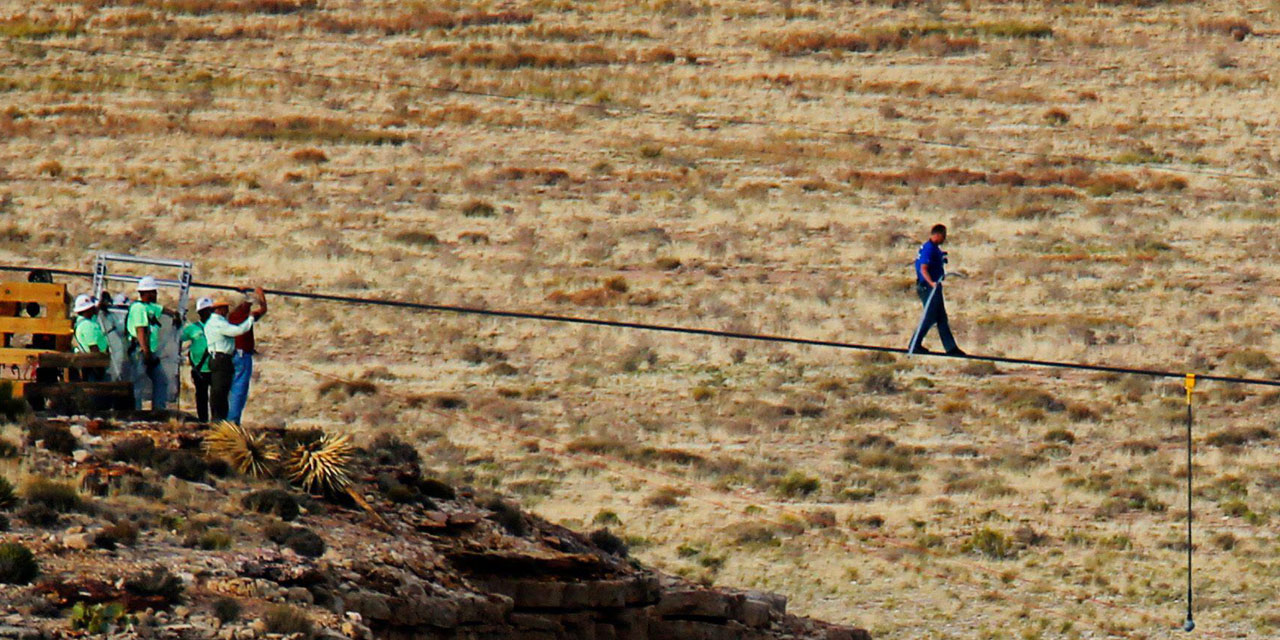The High Cost of Safety Nets
Americans have become intolerant of many risks that people once dealt with on a daily basis, as the Covid-19 pandemic has shown.

By Capital Thinking • Issue #1054 • View online
June 24, 2013, was a clear day in the Arizona desert.Nik Wallenda walked carefully along the two-inch-thick high wire, suspended 1,500 feet (the height of the Empire State Building) above Hellhole Bend, a gorge near the Grand Canyon.
Bring Back Risk
Allison Schrager | City Journal:
Wallenda prayed as he slowly traversed the 1,400-foot wire, facing 30-mile-per-hour winds. His pace picked up, and he broke into a brief sprint as he reached the end, smiling widely as he jumped off and kissed the ground.
The year before, Wallenda had walked across Niagara Falls, but the American and Canadian governments and ABC, which filmed the stunt, required him to wear a safety harness. Not this time. There was no harness or net. If Wallenda fell, he was on his own.
Wallenda trains obsessively. He insists that tightrope-walking is mostly a mental activity. Doubting yourself after you take a risk may be the biggest danger of all, rivaled only by the false sense of security that comes from thinking that someone else, or a safety net, will protect you if you screw up.
But being a tightrope walker isn’t what it used to be.
Wallenda devotes significant time and energy to getting permits and complying with safety regulations that don’t necessarily make him safer—and may even expose him to danger. He wears a harness only if the government permit or broadcaster demands it.
Terry Troffer, his father and chief rigger and safety coordinator, told the Chicago Tribune:
“It’s more of a danger to him. If someone is walking with a harness, it’s easy to just say, ‘It’s OK if I fall because I have a harness.’ You are kind of over-relaxed. If you don’t have a harness, you know you’d better not take the slightest misstep.”
Wallenda knows that a safety net offers no guarantees. An uncle of his died after falling into one and bouncing off it onto the hard ground.
Americans have become intolerant of many risks that people once dealt with on a daily basis, as the Covid-19 pandemic has shown.
Even 20 years ago, retreating to our homes for months on end at the government’s urging for a virus with Covid’s risk profile would have been unthinkable.
We’ve often heard during the pandemic that we can return to normal “when it is safe.” Indeed, we hear the word “safe” a lot these days, but it’s often an unrealistic standard that no previous generation expected.
Certain Covid restrictions can be justified, but extreme risk-aversion from government bureaucrats has caused more harm than good—for example, shutting down in-person teaching for children, who were at low risk from the virus, or imposing draconian economic lockdowns that caused many businesses needlessly to fail.
There are many reasons for our declining risk tolerance.
We were raised and live in a richer society, where we need to take fewer risks. The government plays a growing role in removing risk from our lives, from the financial system to the workplace and beyond.
We wind up less used to confronting risk—and less prepared for life’s inevitable shocks.
This threatens not only our resilience but also, over time, our prosperity.
Risk is critical for a flourishing society and vibrant economy. Investors and entrepreneurs must take chances to find new innovations.
Individuals need to do so as well, in order to achieve their personal and economic potential. If well designed, regulation can help us balance risk and reward sensibly.
But our goal as a society seems more and more to be reducing risk at all costs.Consider the economic effects of contemporary regulators’ reach.

After a global pandemic, it might seem counterintuitive to say that Americans need more risk. Nevertheless, we’re at a critical moment.
The Build Back Better agenda would push the risk-elimination project to a new level, paying out more government benefits to all but the highest earners.
Thanks to technological innovation, it’s easier than ever to earn a living doing remote, freelance, and gig work, all of which can make workers more autonomous and entrepreneurial.
But the changing structure of our economy threatens to hold people back from exploring these options.
We should instead be supporting risk-taking—with a robust safety net, yes, but one that doesn’t diminish the upside of risk.